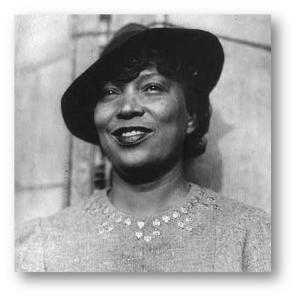Those who follow FathersFootprints.com know that Black History is not just something we feature in February.
The Harlem Renaissance (also known as the Black Literary Renaissance and the New Negro Movement) refers to the flowering of African American cultural and intellectual life during the 1920s and 1930s. At the time, it was known as the “New Negro Movement”, named after the 1925 anthology The New Negro edited by Alain Locke. Centered in the Harlem neighborhood of New York City, the movement influenced urban centers throughout the United States. Across the cultural spectrum (literature, drama, music, visual art, dance) and also in the realm of social thought (sociology, historiography, philosophy), artists and intellectuals found new ways to explore the historical experiences of black America and the contemporary experiences of black life in the urban North.
Challenging white paternalism and racism, African-American artists and intellectuals rejected imitating the styles of Europeans and white Americans and instead celebrated black dignity and creativity. Asserting their freedom to express themselves on their own terms, they explored their identities as black Americans, celebrating the black culture that had emerged out of slavery, as well as cultural ties to Africa. Wiki
There are several critical writers that helped to birth and define the era known to us as the Black Literary Renaissance. In no particular order, the literary giants of that era included: 1) Zora Neale Hurston; 2) Langston Hughes; 3) Jesse Redman Fauset; 4) Walter White; 5) Claude McKay; and 6) Rudolph Fisher. Today’s feature highlights the lady widely known by her first name.
Zora Neale Hurston (January 7, 1891 – January 28, 1960) 
Zora Neale Hurston was a utopian, who believed that black Americans could attain sovereignty from white American society and all its bigotry, as proven by her hometown of Eatonville. She was born in 1891 and her father was a Baptist preacher, tenant farmer, and carpenter. At age three her family moved to Eatonville, Fla., the first incorporated black community in America. Her father would also become mayor of that town. In her writings she would glorify Eatonville as a utopia where black Americans could live independent of the prejudices of white society.
Zora was a novelist, folklorist, and anthropologist and an authority on black culture from the Harlem Renaissance. In this artistic movement of the 1920s black artists moved from traditional dialectical works and imitation of white writers to explore their own culture and affirm pride in their race. Zora pursued this objective by combining literature with anthropology. She first gained attention with her short stories such as “John Redding Goes to Sea” and “Spunk” which appeared in black literary magazines. After several years of anthropological research financed through grants and fellowships, Zora’s first novel Jonah’s Gourd Vine was published in 1934 to critical success.
In 1935, her book Mules and Men, which investigated voodoo practices in black communities in Florida and New Orleans, also brought her kudos. The publication of what is considered Hurston’s greatest novel was Their Eyes Were Watching God, published in 1937. Published works by Hurston over the next ten years either received mixed reviews or failed according to literary standards. Zora never addressed the issue of racism of whites toward blacks, and as this became a developing theme among black writers in the post World War II era of civil rights, Zora’s literary influence faded. She further scathed her own reputation by railing the civil rights movement and supporting ultraconservative politicians. She died in poverty and obscurity in 1960.
Copyright © 2009
